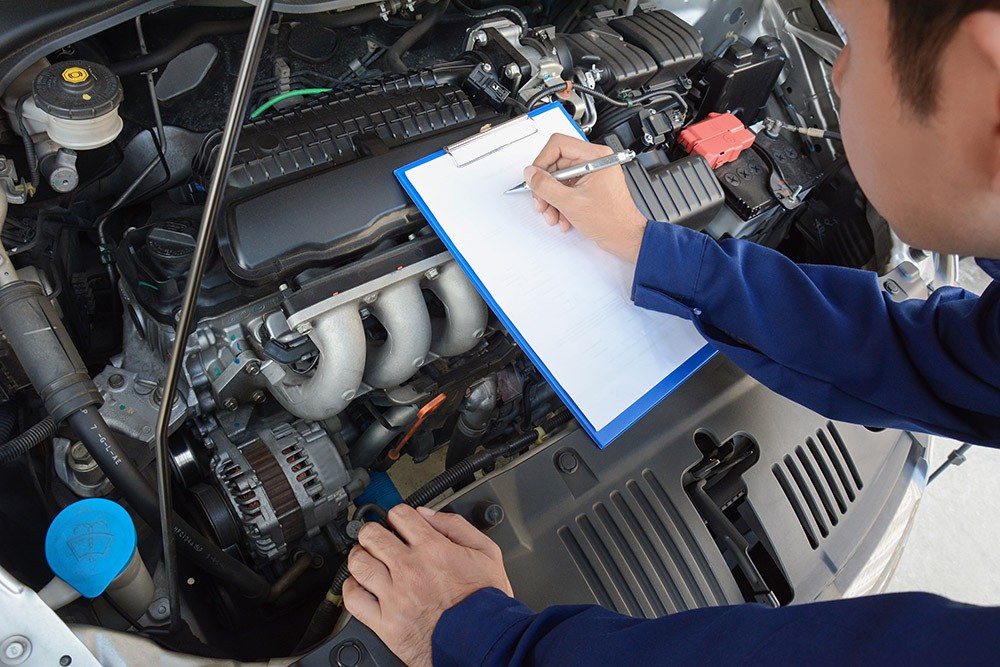
Between long family road trips and countless trips to summer camps, you’ve logged a lot of miles these past few months. And you probably have a few more outdoor adventures to go.
Drivers tend to demand more of their vehicles during the summer months. Extreme heat and long journeys lead to inevitable wear and tear on brakes, engine and tires.
Your vehicle demands extra attention before the next summer trek up mountain roads and along remote byways.
So says Tony Molla, national host of an auto-related podcast who has 40 years of vehicle service experience, who emphasizes the importance of automotive inspections. Molla recommends regular visual inspections and address some of these common summer vehicle maintenance tips:
1. Get your brakes checked. Summer adventures and long road trips, plus extreme heat, accelerate wear on your brakes. Before heading out on one last summer hoorah to the mountains, get your brake components inspected–pads, rotors, cylinder, calipers and fluid lines.
2. Stay on top of your car’s fluids. Engine oil, transmission fluid, brake fluid, and coolant all work overtime during hot weather and extended use. These fluids can break down faster, becoming less effective at lubricating, cooling, and protecting your vehicle's vital systems.
3. Replace wiper blades. Popular destinations in the US are experiencing the monsoon season in August. Install a set of wiper blades before you head out on your next summer adventure. Hot temperatures can harden and crack the rubber components, especially if your car is typically parked outside and not under covered protection.
4. How are your tires? Hotter than normal temperatures can accelerate your vehicle’s tire wear and tear, especially if you’ve put in the miles this summer. Complete a visual inspection with your mechanic to check for proper tread and address any unusual blemishes.
5. Look for engine belt wear. Rubber-based components wear quickly in hot weather. The heat can cause belts to expand, become more flexible, which leads to cracking and premature aging. Have your mechanic inspect engine belts for signs of wear and tear before your outdoor adventures.
6. Get a battery capacity check. Heat causes battery issues such as corrosion, impeding chemical reactions that produce electricity, which affects engine starting and can lead to battery failure.
7. Replace engine and cabin filters. Dust and pollen accumulate quickly in summer, especially if you are traveling in rural areas. Keep your cabin fresh and reduce allergens by replacing your car’s air filters regularly. Also, check engine air filters. A clogged filter can reduce engine performance and accelerate engine wear.
Other suggestions for your late summer excursions
Tire pressure. One sure way to wear down your tires includes having too little pressure or, as can happen in summer, too much pressure. Keep a digital pressure pump handy. They’re inexpensive and a fast way to check tires at home.
Protect Seats and Floor Mats. Use seat covers and all-weather floor mats to protect your car's upholstery from spills, stains, and wear. These accessories are easy to clean and maintain, extending the life of your car's interior.
Prepare for emergencies. Plan your journey and tune into weather alerts.
Pack an emergency road kit that includes:
- Two or more flares. Nonflammable, battery operated flares may be easier to ignite in foul weather and less of a fire hazard, especially in dry climates such as California and Arizona.
- Paper maps or a road atlas. Your smartphone or GPS device may not operate properly in electrical storms, hurricanes and tornadoes. An old-fashioned map can help you navigate detours or find a safe haven.
- Inexpensive battery-operated radio or hand-crank two-way radio. These devices can help drivers stay in touch during storms rather than draining their vehicle battery by charging smartphones and other electronic devices.
- Reflective road triangles to help motorists and emergency crews see your vehicle.
- First aid kit, jumper cables and extra batteries.
- LED Flashlight. They last for hours and some are designed to emit an emergency flash.
- Jack and ground mat for changing a tire.
- Work gloves and a change of clothes in case you need to change a tire, fix a hose or make a small repair.
- Basic repair tools and some duct tape (for temporarily repairing a hose leak).
- A jug of water and paper towels for cleaning up.
- Extra windshield washer fluid and replacement wiper blades.
- Sanitation and personal hygiene items.
Copyright © 2024 by Sensible Driver. All rights reserved.